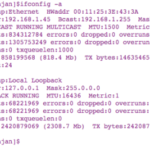Lyceum: another WordPress multiuser/multiblog
A new project called Lyceum is launched. According to the site: “Lyceum is a multi-blog derivative of WordPress, suitable for installations with 2 or 200,000 blogs!” Sounds good! and they’ve a wiki with installation instruction. I’ve previously tried WordPressMu (another wordpress multi-user/multi-blog) and written installation manual HowTo Install WordPress MultiUser Edition. With the WordPressMu I’ve encountered few problems like; uploading files from the write post menu, making it work with multiple languages (e.g Japanese) and the lack of documentation (although they’ve active discussion forum).
I’ve put Lyceum in my To Test List. Following is the description from their about page:
Multi-user, multi-blog enhancement of the WordPress blogging engine.
Enterprise database architecture – Lyceum leverages the WordPress database architecture, extending multi-user blogging within a single instantiation of the WordPress schema.
N-scalable and easily distributed – Lyceum allows administrators to seamlessly distribute the application across multiple web servers, as resource demands grow.
Security-conscious design – Developed with a focus on security, at the application and execution layer. Leveraging the WordPress codebase, and structured to effectively deal with comment spam, administrators can feel secure with a transparent, well-designed product.
Ease of install and upgrade – Lyceum is designed to be easy to install and upgrade. With a minimal filesystem footprint, Lyceum remains manageable as the Blogosphere scales.
Perfect for the campus, enterprise – and small group – Lyceum retains the native functionality of WordPress, ensuring that groups small and large will enjoy use.






Hi, I am curious to know about the results of Lyceum, do it also support subdomains?
Hi Bilal,
thanks for stopping by. I haven’t tested the Lyceum myself yet. My to test list is getting longer and longer :). But there’re some good Installation guides online. And yes, it does support subdomains.